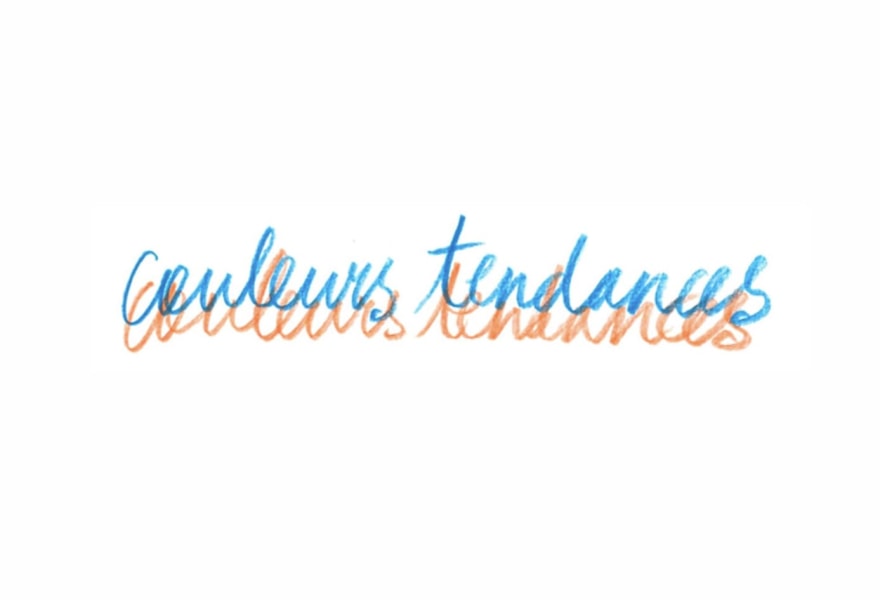16 march 2025, Yves Joris
couleurs tendances: a choreography of colour
How many books have been written about colours? The World According to Colour by James Fox is currently on my nightstand, awaiting the attention it deserves. Somewhere between perception and imagination, between the raw gesture of paint and ethereal haze of pigment, colour moves as a fluid entity. In 'couleurs tendances', a rhythmic dialogue unfolds between five artists, each with a unique voice and unique poetics of colour and abstraction.
Let’s start by reflecting on the title 'couleurs tendances' (‘trendy Colours’), a title that both provokes and questions. Are these the trendy colours of the moment, the fleeting trends that dictate visual fashion? Or is there something more fundamental at play, something that cannot be captured in aesthetic transience?
Dissect the word tendances and you’ll discover a creative and dynamic interplay of meanings: tension (tension) enters into dialogue with movement (danse). In 'couleurs tendances', colour is not a passive element, but an active player—at times an intimate dance partner, at other times a primal force building tension. Is it a snapshot or a fluid process? The exhibition at TaLe Art Gallery invites not only observation but, above all, experience. This is not a static collection of works of art, but a carefully composed rhythm of colours and forms in which each painting plays a role within a larger visual whole.

couleurs tendances, TaLe Art Gallery
The language of colour
Colour needs no words. It resonates, vibrates and glides from canvas to canvas like a melody without beginning or end. It is as if Christophe Denys paints with the echoes of his memory. His compositions are rhythmic and saturated, balancing between chaos and harmony. Up close, the patterns pulse in a visual cacophony, but step back and the entirety reveals its equilibrium, like a musical cadence divulging its structure only from a distance. His work is not merely abstract canvases, but visual rhythms that unveil themselves only to those willing to look slowly.
Luc Vandervelde Lux approaches colour as matter. His canvases exude the texture of memories, of objects that have lived another life. Wood, metal, rubber—his palette is not limited to pigments, but encompasses the sediment of the world itself. The tension between transience and reconstruction becomes tangible, as if the artworks contain the very layering of time. Here, colour is not merely an optical experience, but a material presence, a dialogue between what was and what could be.
With Ruth van Haren Noman, the brushstroke is as intuitive as it is poetic. Her paintings balance between figuration and abstraction, as if continuously wavering between recognition and mystery. She notes, sketches, rethinks—a process of emergence and disappearance, of making the elusive visible. Her work is like a dream revealing itself only in the twilight of consciousness. Each canvas is a whisper, a memory slowly building up in layers of paint.

couleurs tendances, TaLe Art Gallery
Tim Trenson in turn flirts with narrative and abstraction and his canvases suggest worlds in which figures seem to emerge, only to dissolve again in a flux of colour and movement. Painting is not a fixed image, but a scene in an endless film. His paintings are like frames, each telling a different story without a beginning or end.
"The painting wants to be a painting!" This credo has formed the core of Wannes Lecompte’s artistic practice for 20 years. His paintings emerge slowly in a layering process in which he embraces chance and treats emptiness as equally as important as colour. Lecompte paints as a composer composes: rhythmically, thoughtfully, with an eye for the silence between the notes. His brushstrokes intertwine, alternating between control and spontaneity. The white space around the paint is not emptiness but breathing space — a pause in a visual cadence that, like a drumbeat, resonates just as much in what is left unsaid.
The echo of Matisse: Fauvism as a rhythmic ancestor
Hearing the word danse in relation to painting might unconsciously bring Henri Matisse to mind. His iconic La Danse (1910) is more than a depiction of bodies in motion; it is a composition in which colour and form reinforce each other into a pulsating whole. The vibrant blues, fiery reds and earthy oranges capture not only the movement of the dancers, but also the inner vibration of colour itself.

couleurs tendances, TaLe Art Gallery
Fauvism was not a style meant to please, but a revolt against conventional colour use. The artists of 'couleurs tendances' share this instinctive freedom — not merely to provoke, but to restore colour’s inherent energy, to make it dance again, with the tension of experimentation and the ecstasy of the moment.
The challenge of an unfinished symphony
Looking at these paintings is like listening to a piece of music that never truly ends. Each canvas is a moment in time, a fragment in a larger process of becoming and vanishing. And so 'couleurs tendances' leaves us with a paradox. The exhibition ends, but the paintings continue to resonate. The colours do not disappear when you leave the gallery; they settle into memory, like sounds lingering long after the last note has been played. Because in the dance of colour and tension, in the rhythm of abstraction, there is always a promise of something new — a next movement, a next nuance, a next step in the unending choreography of seeing.
